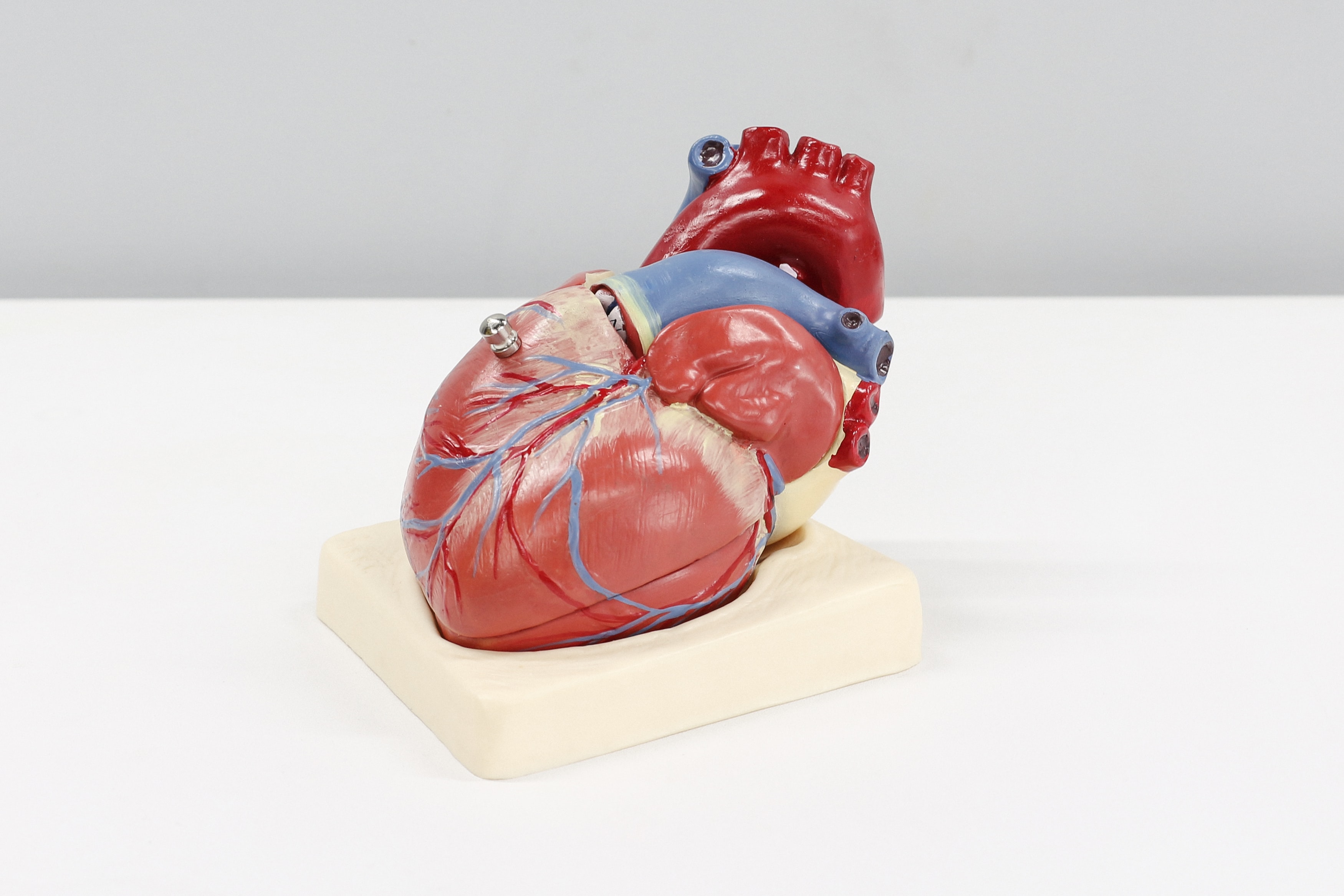Incidence of Respiratory Tract Infection in Children with Cyanotic and Acyanotic Congenital Heart Disease: A Comparative Study

Downloads
Highlights:
1. The incidence of respiratory tract infection (RTI) showed no difference between patients with cyanotic and acyanotic congenital heart disease (CHD).
2. RTI patients with acyanotic CHD experienced longer hospital lengths of stay.
Abstract
Introduction: Respiratory tract infection (RTI) is the leading cause of children mortality rate in the world. Congenital heart disease (CHD) is a common congenital disease that plays a role in RTI incidents. However, between the 2 types of CHD, which type that is more potential to cause the RTI is not well identified. The aim of this study was to compare the incidence and hospitalization time of RTI between 2 types of CHD and describe the profile of the patients based on gender, age, nutrition, and immunization status.
Methods: This retrospective study identified the medical records of children with RTI and all types of CHD aged 0-18 years old at Dr. Soetomo General Hospital Surabaya. The diagnosis of CHD was observed by echocardiography and RTI was observed by clinical symptoms.
Results: Of 135 patients, the incidence of RTI showed no difference between a patient with cyanotic and acyanotic CHD. The majority of the patient was aged less than 3 years old (93.3%) and dominated by male patients (53.3%). The frequency of children with severe underweight and good nutritional status was equal. There were 85 patients who had incomplete immunization based on their age. The most common type of acyanotic CHD was an atrial septal defect (ASD). Cyanotic CHD was dominated by the tetralogy of Fallot (ToF). Pneumonia was the common type of RTI (108/135). RTI patients with acyanotic CHD had a longer time of hospitalization than cyanotic patients (11 days).
Conclusion: This study found that RTI patients with acyanotic CHD experienced longer hospital lengths of stay.
Troeger C, Blacker B, Khalil IA, et al. Estimates of the Global, Regional, and National Morbidity, Mortality, and Aetiologies of Lower Respiratory Infections in 195 Countries, 1990–2016: a Systematic Analysis for the Global Burden of Disease Study 2016. Lancet Infect Dis 2018; 18: 1191–1210.
Djer MM, Osmardin E, Hegar B, et al. Increased Risk of Recurrent Acute Respiratory Infections in Children with Congenital Heart Disease: A Prospective Cohort Study. Indones Biomed J 2020; 12: 355–360.
Rahayuningsih SE. Familial Congenital Heart Disease in Bandung, Indonesia. Paediatr Indones 2013; 53: 173.
Daurach M, Michel-Behnke I. Respiratory Syncytial Virus Infections among Children with Congenital Heart Disease. In: The Burden of Respiratory Syncytial Virus Infection in the Young. IntechOpen. Epub ahead of print 30 October 2019. DOI: 10.5772/intechopen.85552.
Jung JW. Respiratory Syncytial Virus Infection in Children with Congenital Heart Disease: Global Data and Interim Results of Korean RSV-CHD Survey. Korean J Pediatr 2011; 54: 192.
Ujunwa F, Ezeonu C. Risk Factors for Acute Respiratory Tract Infections in Under-Five Children in Enugu Southeast Nigeria. Ann Med Health Sci Res 2014; 4: 95.
Gabriela K, Kuswiyanto RB, Dwiyatnaningrum F. Clinical Characteristic and Outcome of Acute Lower Respiratory Tract Infection in Children with Congenital Heart Disease. Althea Med J; 2. Epub ahead of print September 2015. DOI: 10.15850/amj.v2n3.483.
Ramani VK. Acute Respiratory Infections among Under- Five Age Group Children at Urban Slums of Gulbarga City: A Longitudinal Study. J Clin DIAGNOSTIC Res. Epub ahead of print 2016. DOI: 10.7860/JCDR/2016/15509.7779.
Fedora K, Utamayasa IKA, Purwaningsih S. Profile of Acyanotic Congenital Heart Defect in Children at Dr. Soetomo General Hospital Surabaya Period of January – December 2016. JUXTA J Ilm Mhs Kedokt Univ Airlangga 2019; 10: 79.
El–Saied MM, Mohie El Deen ZM, Askar GA. Recurrent Pneumonia in Children Admitted to Assiut University Children Hospital. Magnitude of the Problem and Possible Risk Factors. Med Res J 2019; 4: 13–24.
Chamekh M, Deny M, Romano M, et al. Differential Susceptibility to Infectious Respiratory Diseases between Males and Females Linked to Sex-Specific Innate Immune Inflammatory Response. Front Immunol; 8. Epub ahead of print 13 December 2017. DOI: 10.3389/fimmu.2017.01806.
Ingersoll MA. Sex Differences Shape the Response to Infectious Diseases. PLOS Pathog 2017; 13: e1006688.
Tabib A, Aryafar M, Ghadrdoost B. Prevalence of Malnutrition in Children with Congenital Heart Disease. J Compr Pediatr; 10. Epub ahead of print 28 September 2019. DOI: 10.5812/compreped.84274.
Wicaksono H. Nutritional Status Affects Incidence of Pneumonia in Underfives. Folia Medica Indones 2016; 51: 285.
Kinanthi MTA, Irmawati M, Aprilawati D. Nutritional Status Based on Four Anthropometric Indices and Associated Factors in Children between the Ages 0-2 Years Old in a Slum of Surabaya. JUXTA J Ilm Mhs Kedokt Univ Airlangga 2021; 12: 90.
Izzati N, Rahman M, Thirthaningsih NW. Profile of Children with Congenital Heart Disease and Upper Respiratory Tract Infection in Dr. Soetomo General Hospital Surabaya Period March 2018. JUXTA J Ilm Mhs Kedokt Univ Airlangga 2019; 10: 57.
Alkashkari W, Albugami S, Hijazi ZM. Current Practice in Atrial Septal Defect Occlusion in Children and Adults. Expert Rev Cardiovasc Ther 2020; 18: 315–329.
Montasser N. Assessment and Classification of Acute Respiratory Tract Infections among Egyptian Rural Children. Br J Med Med Res 2012; 2: 216–227.
Hakansson AP, Orihuela CJ, Bogaert D. Bacterial-Host Interactions: Physiology and Pathophysiology of Respiratory Infection. Physiol Rev 2018; 98: 781–811.
Granbom E, Fernlund E, Sunnegårdh J, et al. Respiratory Tract Infection and Risk of Hospitalization in Children with Congenital Heart Defects During Season and Off-Season: A Swedish National Study. Pediatr Cardiol 2016; 37: 1098–1105.
Ahuja N, Mack WJ, Wu S, et al. Acute Respiratory Infections in Hospitalised Infants with Congenital Heart Disease. Cardiol Young 2021; 31: 547–555.
Ambroz S, Töteberg-Harms M, Hanson J, et al. Outcome of Pediatric Cataract Surgeries in a Tertiary Center in Switzerland. J Ophthalmol. Epub ahead of print 2018.
Özdemir Åžahan Y, Kılıçoğlu E, Ülger Tutar Z. Evaluation of Children with Congenital Heart Disease Hospitalized with the Diagnosis of Lower Respiratory Tract Infection. J Pediatr Res 2018; 32–36.
Copyright (c) 2022 Syafira Yasmine, I Ketut Alit Utamayasa, Bambang Herwanto

This work is licensed under a Creative Commons Attribution-ShareAlike 4.0 International License.
1. The journal allows the author to hold the copyright of the article without restrictions.
2. The journal allows the author(s) to retain publishing rights without restrictions
3. The formal legal aspect of journal publication accessibility refers to Creative Commons Atribution-Share Alike 4.0 (CC BY-SA).




























